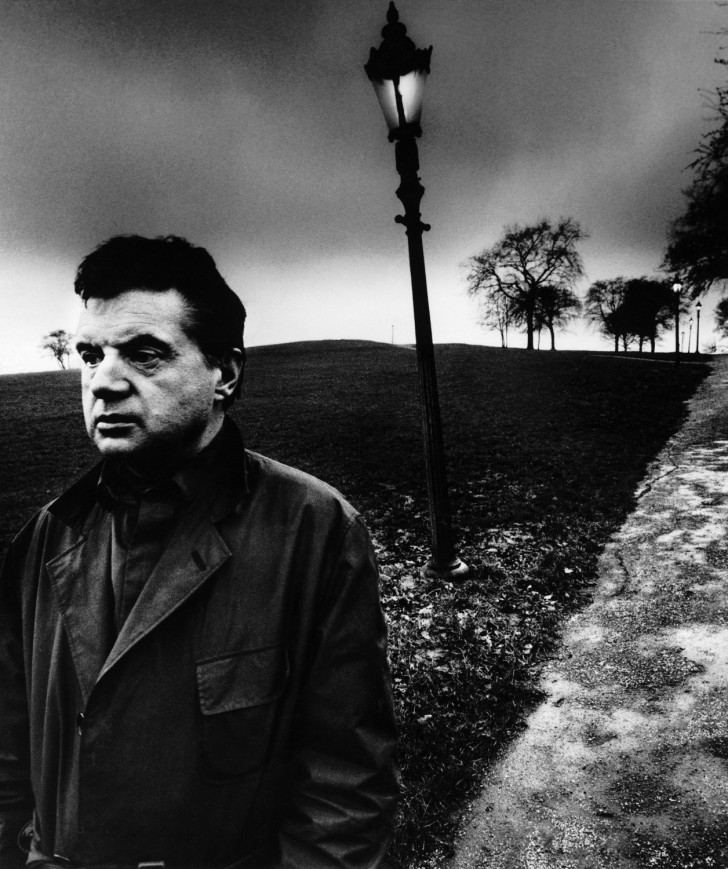
Francis Bacon on Primrose Hill, London by Bill Brandt, 1963
I first saw Bill Brandt’s photograph of the British painter Francis Bacon, walking on Primrose Hill in North London, when I was nineteen at a retrospective of Brandt’s work. It’s the kind of portrait that photographers are much less inclined to make today. Brandt (1904-83) feels free to impose his own vision on his illustrious subject. Is the outcome really a study of Bacon—of who the painter was—or does it use him as a pretext to make an image that expresses something about life that Brandt wished to say?
According to Brandt’s biographer, Paul Delany, Bacon didn’t enjoy the process of being photographed by Brandt, and he hated the picture. That suggests Bacon didn’t recognize himself in the image, but we can’t allow the subject to be the arbiter of photographic success. In The Brutality of Fact, Bacon readily acknowledged that the distortions in his painted portraits involved “injury” to the person depicted. He felt this was the inevitable consequence of producing work that would “come across to us as a fact”—in other words, strike the viewer as true. As a photographic artist, why shouldn’t Brandt be granted the same license?
The picture was taken in 1963, the jaunty commercial era of Pop Art, and the landmark year in popular culture of the Beatles’ first LP. Yet the portrait’s somber mood, entirely in keeping with Brandt’s earlier high-contrast photographs, feels more like a product of the late 1940s or 1950s, the gloomy post-war epoch of existentialism, film noir, the Theater of the Absurd, Samuel Beckett’s Waiting for Godot, and the Angry Young Men.
Bacon looks haunted and close to desperate. His eyes are black holes. Brandt casts the leather-clad habitué of Soho drinking clubs as a protagonist in a bleak existential drama. He gives his stage set—the leaning lamp post and path, the inky clumps of trees and leaden sky—so much weight that we can’t fail to take these props pressing on Bacon’s back, almost forcing him out of the frame, as correlatives for his state of mind. The artist’s position at the edge, an audacious maneuver by Brandt, makes it seem that the picture is about what lies ahead of him, and can only be imagined, just as much as it’s about the desolate trail already taken.
This is a tragic view of existence. Whatever Bacon felt about the image, it internalizes the horror that viewers saw in his paintings. Despite the brilliance of its construction, it’s hard now to overlook the melodrama, artifice, and air of aggrandisement. We are no longer so inclined to indulge the figure of the artist as a suffering romantic, and the sense of malaise (which may be real) must be coded in less direct contemporary forms.See all Exposure columns


Comments [1]
01.25.16
03:56